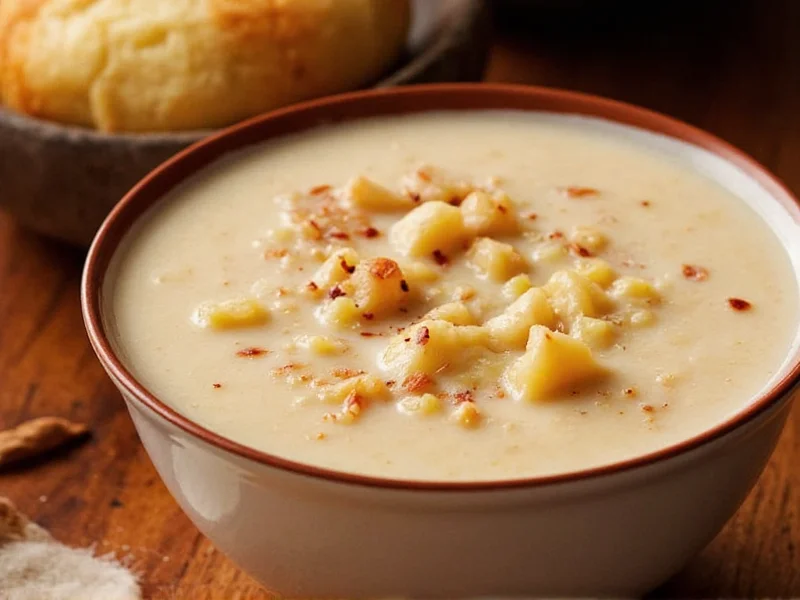Campbell's cream soups have been kitchen staples since the 1930s, evolving from simple soup products into essential cooking ingredients for home chefs. These condensed cream-based products offer consistent texture and flavor that streamline recipe preparation while delivering reliable results. Understanding their composition and proper usage techniques unlocks their full culinary potential beyond simply heating and serving as standalone soups.
Understanding Campbell's Cream Soup Varieties
While Campbell's offers multiple cream soup varieties, three stand out for their culinary versatility:
| Variety | Primary Flavor Profile | Best Culinary Applications |
|---|---|---|
| Cream of Mushroom | Earthy, umami-rich | Stroganoff sauces, vegetable gratins, meatloaf binder |
| Cream of Chicken | Mild poultry essence | Casseroles, pot pies, creamy pasta sauces |
| Cream of Celery | Subtle herbal notes | Fish sauces, potato salads, creamy vegetable dishes |
Each variety contains a standardized mixture of modified food starch, vegetable oil, and dairy components that create their signature thick texture. The condensed format means these products require liquid dilution when used as soup but function effectively as-is when incorporated into recipes as a thickening agent.
Practical Recipe Integration Techniques
Professional chefs and home cooks utilize Campbell's cream soups in three primary ways:
- As a sauce base - Combine one can (10.5 oz) with 1 cup liquid (milk, broth, or water) for instant creamy sauces. Add herbs and seasonings to customize flavor profiles for dishes like chicken pot pie or tuna casserole.
- As a binder - Use undiluted in meatloaf, meatballs, or vegetable patties to maintain moisture and structure during cooking.
- As a flavor enhancer - Stir two tablespoons into mashed potatoes, gravy, or stuffing for added richness without altering texture significantly.
When substituting Campbell's cream soups in recipes calling for homemade cream sauces, maintain a 1:1 ratio. For example, replace one cup of béchamel with one cup of diluted cream of mushroom soup. This substitution saves approximately 15 minutes of preparation time while delivering consistent results.
Avoiding Common Preparation Mistakes
Several issues commonly arise when using cream-based products in cooking:
- Curdling - Occurs when soup is brought to a full boil. Maintain temperatures below 180°F (82°C) and avoid rapid temperature changes.
- Over-thickening - Happens when using undiluted soup in recipes requiring thinner consistency. Adjust liquid content incrementally until desired texture is achieved.
- Flavor imbalance - Some varieties contain higher sodium levels. Reduce added salt by 25% when incorporating these products into recipes.
For gluten-free cooking requirements, Campbell's offers specific varieties labeled as such, though traditional cream soups contain wheat flour as a thickening agent. Always check current packaging for allergen information as formulations may change.
Storage and Shelf Life Considerations
Unopened Campbell's cream soups maintain quality for 18-24 months when stored in cool, dry conditions. Once opened, transfer unused portions to airtight containers and refrigerate for up to 5 days. Freezing is not recommended as it alters the emulsion structure, leading to separation upon thawing.
When incorporating refrigerated portions into recipes, bring to room temperature gradually before heating to prevent curdling. Gently whisk while warming over low heat for best results.
Modern Culinary Applications
Contemporary chefs have expanded traditional uses for cream soups in innovative ways:
- Creating quick cheese sauces by combining cream of mushroom soup with shredded cheddar
- Developing vegetarian gravy alternatives using cream of celery soup
- Formulating creamy salad dressings with diluted cream of chicken soup
- Enhancing slow cooker recipes with built-in sauce components
These applications demonstrate how Campbell's cream soups function as culinary shortcuts without sacrificing quality, particularly valuable for weeknight cooking when time constraints exist. The standardized flavor profiles ensure consistent results across multiple preparations.











 浙公网安备
33010002000092号
浙公网安备
33010002000092号 浙B2-20120091-4
浙B2-20120091-4